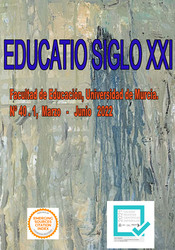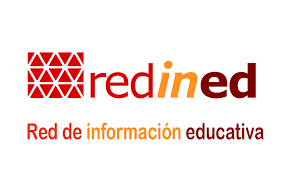Cooperative learning in the CLIL classroom: challenges perceived by teachers and recommendations for Primary Education
Abstract
The popularity of Content and Language Integrated Learning (CLIL), as a pedagogical approach requiring a flexible methodology to learn content and a foreign language (FL), is unquestionable today. Cooperative learning (CL) seems to be an ideal methodology to meet the demands of CLIL. This study is aimed at collecting the perceptions of CLIL teachers with regard to the challenges that this approach entails when CL is implemented in primary-school classrooms. The respondents (n= 35) completed an online survey with 25 questions (closed-ended and open-ended). Results revealed the following challenges: use of the target language for interaction; motivation; lack of time; potential management problems; and assessment. On the other hand, respondents declared that in order to feel confident when combining CLIL and CL they would need more training. Finally, we provided some recommendations for each grade of Primary Education so as to shed some light on the challenges teachers perceive when CL is employed in CLIL subjects. This leaves an open door for further studies on CL in CLIL lessons from other countries.
Downloads
-
Abstract1861
-
PDF2239
References
Aronson, E. & Patnoe, S. (1997). The Jigsaw Classroom: Building Cooperation in the Classroom. New York: Longman.
Baloche, L. & Brody, C.M. (2017). Cooperative learning: exploring challenges crafting innovations. Journal of Education for Teaching, 43(3), 274-283.
Banegas, D. L. (2012). CLIL teacher development: challenges and experiences. Latin American Journal of Content and Language Integrated Learning, 5(1), 46-56.
Brady, I.K. & García-Pinar, A. (2019). Bilingual Education in the Region of Murcia: a qualitative study on teachers’ views. Estudios de Lingüística Inglesa Aplicada (ELIA), Mon.(I), 179-206.
Buchs, C.; Filippou, D.; Pulfrey, C. & Volpé, Y. (2017). Challenges for cooperative learning implementation: reports from elementary school teachers. Journal of Education for Teaching, 43(3), 296-306.
Campillo, J.M.; Sánchez, R. & Miralles, P. (2019). Primary teachers’ perceptions of CLIL implementation in Spain. English language teaching, 12(4), 149-156.
Casal, S. (2008). Cooperative Learning in CLIL Contexts: Ways to Improve Students’ Competences in the Foreign Language Classroom, in IAIE Cooperative Learning in Multicultural Societies: Critical Reflections, Turin (Italy), January 19-22. Retrieved from https://bit.ly/2Ixd3HX
Casal, S. (2016). Cooperative Assessment for Learning in CLIL Contexts. Estudios sobre Educación, 31, 139-157. Retrieved from doi:10.15581/004.31.139-157.
Coyle, D. (2006). Developing CLIL: Towards a Theory of Practice. In Monograph 6. Barcelona: APAC.
Coyle, D; Holmes, B. & King, L. (2009). Towards an Integrated Curriculum–CLIL National Statement and Guidelines. Retrieved from https://bit.ly/2ID5Y77
Coyle, D.; Hood, P. & Marsh, D. (2010). CLIL Content and Language Integrated Learning. New York: Cambridge University Press.
Cummins, J. (1979). Cognitive/Academic Language Proficiency, Linguistic Interdependence, the Optimum Age Question and Some Other Matters. Working Papers on Bilingualism, 19, 121-129.
Dalton Puffer, Ch. (2008). Outcomes and Processes in Content and Language Integrated Learning (CLIL): Current Research from Europe. In W. Delanoy & L. Volkmann (Eds.), Future Perspectives for Entglish Language Teaching (pp. 139-157). Heidelberg: Carl Winter.
Emmer, E. & Gerwels, M.C. (2005). “Establishing Classroom Management for Cooperative Learning: Three Cases” in Annual Meeting of the American Educational Research Association; Montreal (Canadá), April 11-15. Retrieved from http://files.eric.ed.gov/fulltext/ED490457.pdf
Gillies, R.M.; Ashman, A. & Terwel, J. (2008). The Teacher's Role in Implementing Cooperative Learning in the Classroom. New York: Springer.
Granados Beltrán, C. (2011). Facing CLIL challenges at university level. HOW. A Colombian journal for teachers of English, 18(1), 24-42.
Griffin, L.H. (2015). “Puzzling It Out: Teaching Marketable Skills in History Courses with the Jigsaw Technique”. Perspectives on History. The Newsmagazine of the American Historical Association, November 1. URL: https://bit.ly/2Vn3xNs
Holcomb, Z.C. (2017). Fundamentals of Descriptive Statistic. Routledge: New York.
Jacobs, G.M. (2004). Cooperative learning: Theory, principles, and techniques. 1st International Online Conference on Second and Foreign Language Teaching and Research.
Jacobs, G.M. (2006). Issues in Implementing Cooperative Learning. In S.G. McCafferty, G.M. Jacobs & A.C. DaSilva Iddings (Eds.), Cooperative Learning and Second Language Teaching (pp. 30-46). New York: Cambridge University Press.
Johnson, D.W. & Johnson, R.T. (1999). Making cooperative learning work. Theory into Practice, 38(2), 67-73.
Johnson, D.W.; Johnson, R.T. & Holubec, E. (1999). El aprendizaje cooperativo en el aula. Buenos Aires: Paidós.
Johnson, D.W.; Johnson, R.T. & Holubec, E. (2008). Cooperation in the Classroom. Edina, MN: Interaction Book Company.
Kagan, S. & Kagan, M. (2009). Kagan Cooperative Learning. San Clemente: Kagan Publishing.
Kagan, S. & McGroarty, M. (1993). Principles of Cooperative Learning for Language and Content Gains. In D.D. Holt (Ed.), Cooperative Learning: A Response to Linguistic and Cultural Diversity (pp. 47-66). Retrieved from http://files.eric.ed.gov/fulltext/ED355813.pdf
Lundin, Ch. & Persson, L. (2015). Advantages and Challenges with CLIL: a study eximining teachers’ thoughts on learner engagement and confidence within content and language integrated learning. Thesis manuscript. Retrieved from https://cutt.ly/tdUA5Ov
Madrid, C. (1993). Using Cooperative Learning at the Elementary Level. In D.D. Holt (Ed.), Cooperative Learning: A Response to Linguistic and Cultural Diversity (pp. 67-77). Retrieved from http://files.eric.ed.gov/fulltext/ED355813.pdf
McDougald, J. (2015). Teachers’ attitudes, perceptions and experiences in CLIL: A look at content and language. Colombian Applied Linguistics Journal, 17(1), 25-41. Retrieved from https://cutt.ly/zdUAvRk
McGroarty, M. (1993). Cooperative Learning and Second Language Acquisition. In D.D. Holt (Ed.), Cooperative Learning: A Response to Linguistic and Cultural Diversity (pp. 19-46). Retrieved from http://files.eric.ed.gov/fulltext/ED355813.pdf
Mertler, C.A. (2001). Designing Scoring Rubrics for your Classroom. Practical Assessment, Research & Education, 7(25), 1-8. Retrieved from https://pareonline.net/getvn.asp?v=7&n=25
Moss, R.F. (1992). What are the Benefits of Cooperative Learning in Content-based Instruction?. The Catesol Journal, 5(1), 113-117. Retrieved from http://www.catesoljournal.org/wp-content/uploads/2016/11/CJ5_moss.pdf
Muijs, D. (2011). Doing Quantitative Research in Education with SPSS. London: SAGE Publications Ltd.
Pastor Martínez, M.R. (2011). CLIL and Cooperative Learning. Encuentro. Revista de investigación e innovación en la clase de idiomas, 20, 109-118. URL: http://www3.uah.es/encuentrojournal/index.php/encuentro/issue/viewIssue/11/20
Pathak, V. (2013). Qualitative Research. Perspectives in clinical research, 4(3), 192. Retrieved from doi:10.4103/2229-3485.115389.
Pavón, V. & Ellison, M. (2013). Examining Teacher Roles and Competences in Content and Language Integrated Learning (CLIL). Linguarum Arena 4, 65-78. Retrieved from http://ler.letras.up.pt/uploads/ficheiros/12007.pdf
Pérez Cañado, M.L. (2018). Innovations and challenges in CLIL teacher training. Theory into Practice, 57(3), 212-221. DOI: 10.1080/00405841.2018.1492238
Pérez Vidal, C. (2013). Perspectives and lessons from the challenge of CLIL experiences. In C. Abello-Contesse, P.M. Chandler, M.D. López-Jiménez & R. Chacón-Beltrán (Eds), Bilingual and multilingual education in the 21st century. Building on experience (pp. 59-82). Bristol: Multilingual Matters.
Pescarmona, I. (2011). Working on cooperative learning: challenges in implementing a new strategy. International Journal of Pedagogies and Learning, 6(3), 167-174.
Shea, J.H. (2018). Problems with collaborative learning. Journal of Geological Education, 43(4), 306-308.
Slavin, R. E. (1995). Cooperative learning: theory, research, and practice. Boston: Allyn & Bacon.
Vega, M.V. & Moscoso, M.L. (2019). Challenges in the implemenation of CLIL in Higher Education: from ESP to CLIL in the tourism classroom. LACLIL, 12(1), 144-176.
Wood, D.; Bruner, J.S. & Ross, G. (1976). The role of tutoring in problem solving. Journal of Child Psychiatry and Psychology, 17(2), 89-100.
Zhou, H. (2012). Enhancing Non-English Majors’ EFL Motivation through Cooperative Learning. Procedia Environmental Sciences 12(B), 1317-1323. Retrieved from http://www.sciencedirect.com/science/article/pii/S187802961200429X
Copyright (c) 2022 Servicio de Publicaciones de la Universidad de Murcia

This work is licensed under a Creative Commons Attribution-NonCommercial-NoDerivatives 4.0 International License.
Original work publishes in this journal is subject to the following terms:
1. Murcia University Press (the publishing house) holds the copyright of the publishes work, and favours and allows their reutilization under the use license stated in point 2.
© Servicio de Publicaciones, Universidad de Murcia, 2015
2. Work is published in the electronic edition under a license (Creative Commons Reconocimiento-NoComercial-SinObraDerivada 4.0 España (legal text). They can be copied, used, disseminated, transmitted and publicly presented, as long as: i) authorship and original publication source is acknowledged (journal, publishing house and URL of the work); ii) are not used for commercial purposes; iii) the existence and specifications of this use license is stated.
3. Conditions for self-archive. Authors are allowed and encouraged to disseminate electronically the pre-pint (before review) and/or post-print (accepted for publication) versions of their work before their publication since that favours earlier circulation and dissemination resulting in an increased chance for the authors to be cited and for the work to reach a bigger share of the academic community. Colour: RoMEO: green.







